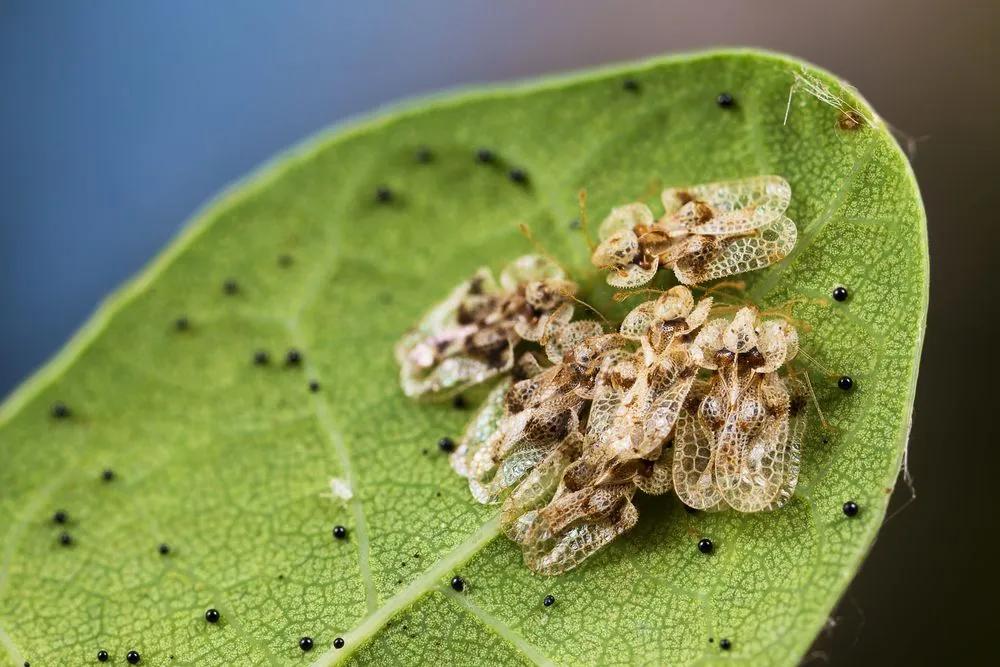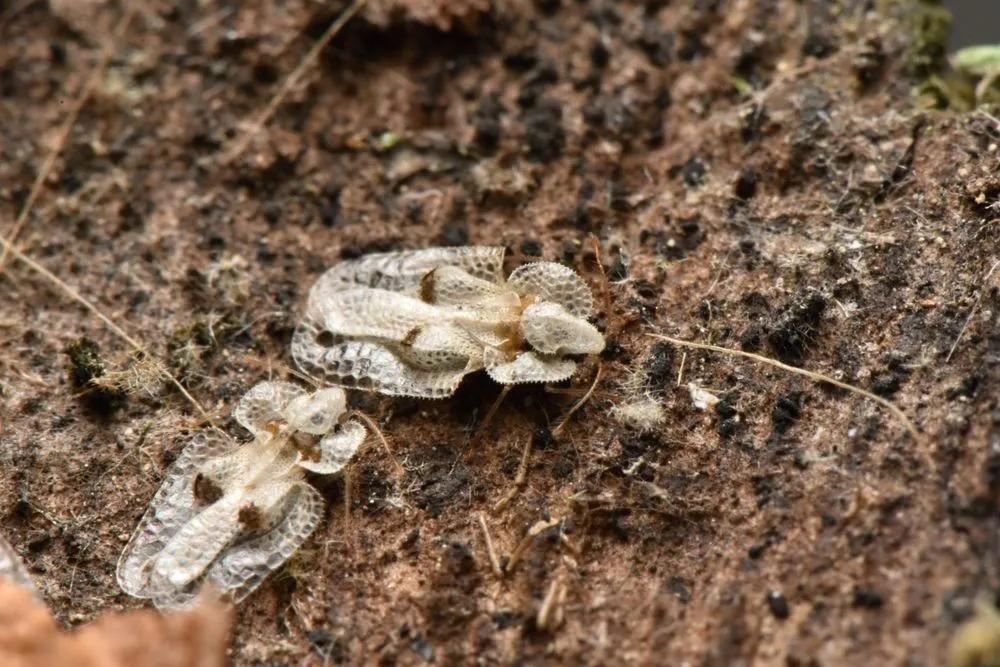Since the injury is purely aesthetic (cosmetic) in most cases, the best option is to tolerate and ignore the feeding. Many natural predators, including lady beetles, assassin bugs, green lacewings, and others, prey on lace bug eggs, nymphs, and adults. They will help limit lace bug feeding. However, it's okay to knock the larvae off small plants using a strong water stream. Since nymphs do not have wings, they cannot get back to plants.
Target the stream at the undersides of the leaves – this is where lace bugs are feeding.
If intolerable damage has occurred, you can resort to pesticides. In such a case, spray the undersides of the leaves where the pests hide.
You can also use horticultural oils and insecticidal soaps. They have a low impact on beneficial insects and natural lace bug enemies. Yet, these substances are effective against the Tingidae.



